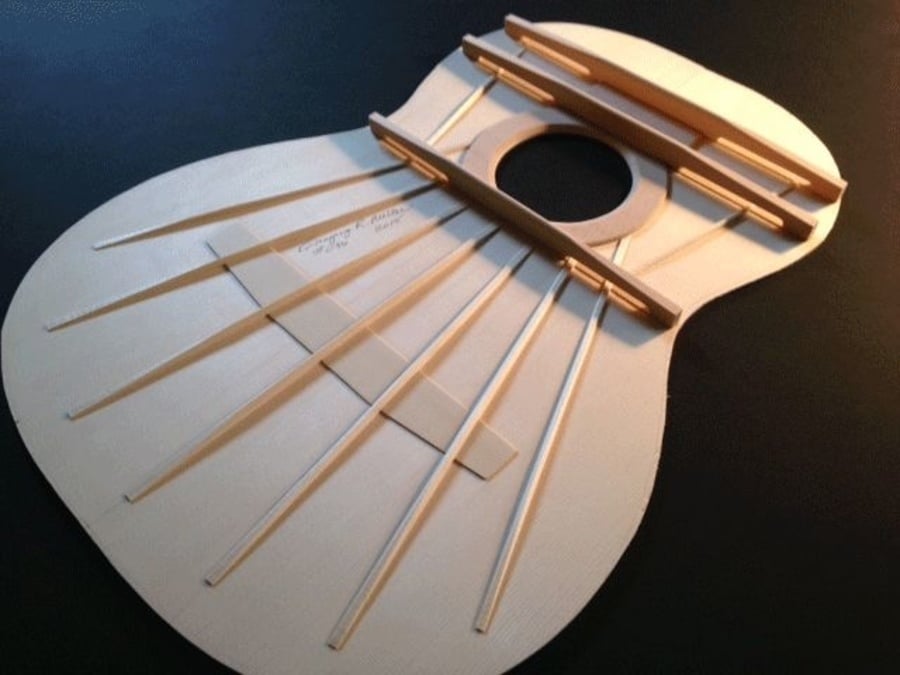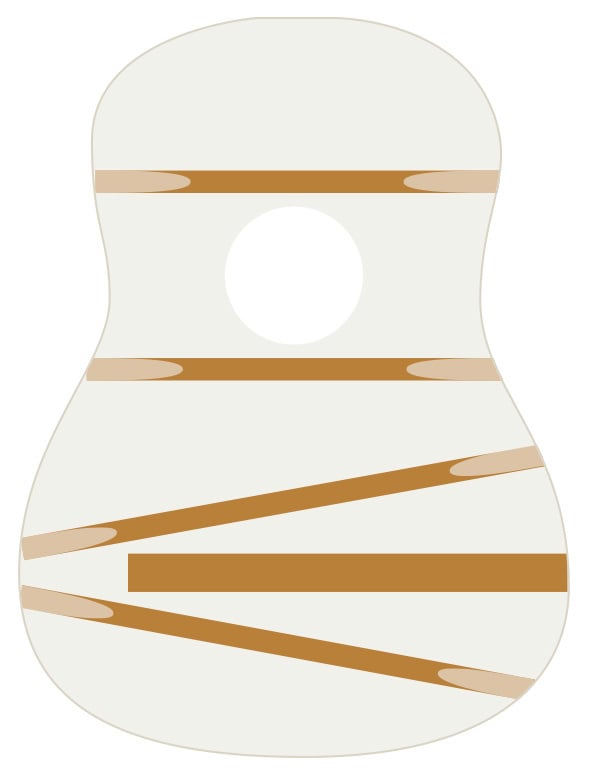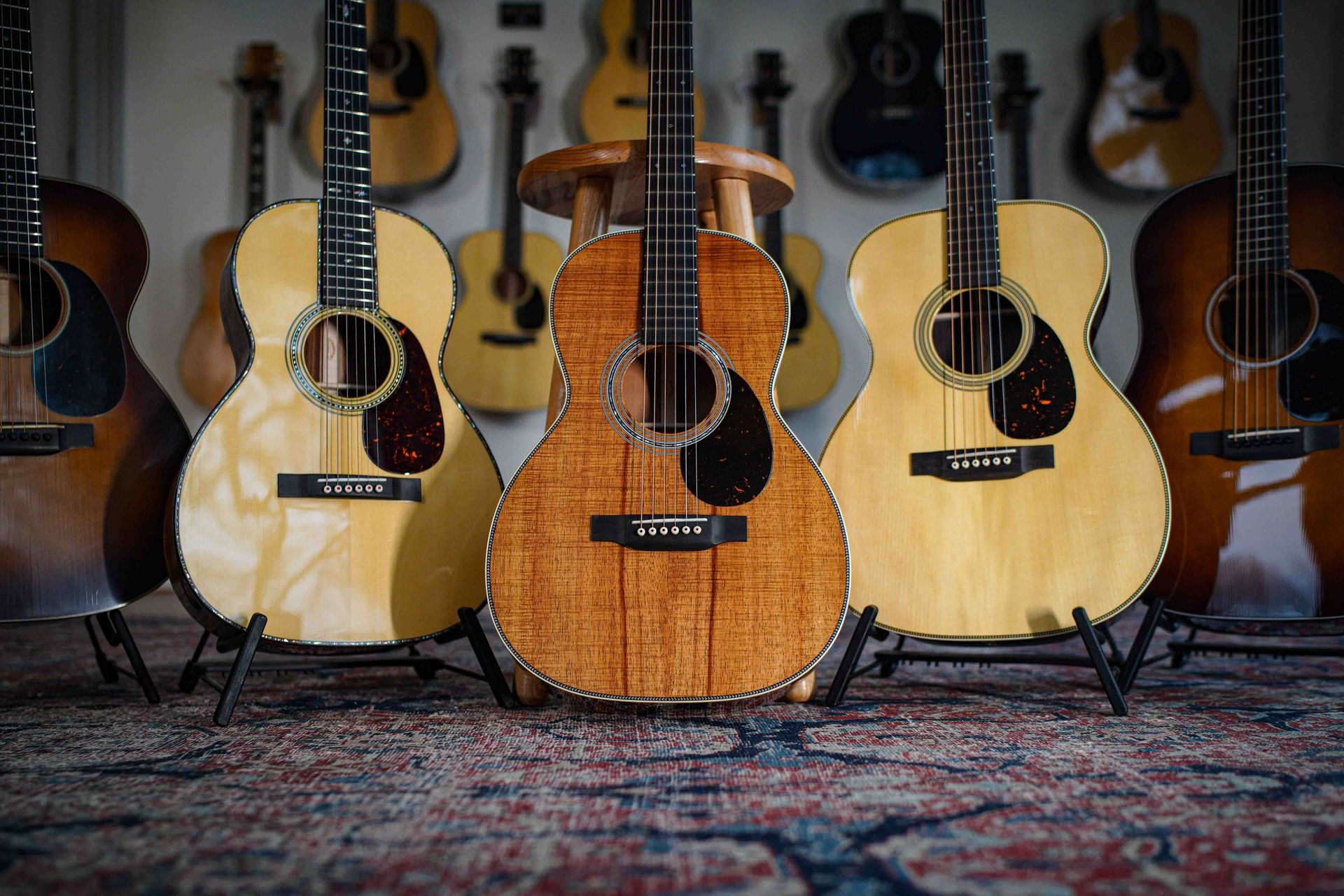On the outside every acoustic guitar may seem like just a few pieces of wood with a soundhole topped of with a few strings. Take a look at the inside of an acoustic guitar and you will find a lot of clever engineering. To make sure a guitar sounds good, the top needs to be reinforcement with small pieces of wood at the right place, this is called bracing. Without bracing the top would vibrate too much, making a acoustic guitar sound chaotic. But where and how do you put those little pieces of wood to give a guitar its own voice?

Classic: Fan
Once invented by Antonio de Torres to make the top as thin and yet as solid as possible: vocal bars in the shape of a fan. Revolutionary then, today the standard for nylon guitars. By adapting the fan with a slightly different shape or an extra bar, there are now a lot of variants available to add your own accent to the sound.

Blues: Ladder
Before ‘fan-bracing’, ‘ladder-bracing’ was the norm. These are actually almost straightforward crossbars under the top. This gives a strong construction, which is why ladder-bracing came back in the 1920s and 1930s. Guitarists were looking for a bit more volume and more often used steel strings. That creates more tension on the guitar and ladder-bracing can handle that much better than fan-bracing. Ladder-bracing gives guitars not only strength, but also a sound of their own: lots of projection, lots of midrange and nice and ‘honky’. A smaller parlor-model with ladder bracing often sounds amazingly loud and is perfectly suited for blues, for instance. But for hitting parts with chords, these guitars sometimes lack some balance.
The ultimate: X-braced
Guitar maker Martin gwent in search of that perfect balance more than a century ago: a solid guitar that had no problems with steel strings and at the same time had to give a sound with volume and a nice balance. By shuffling the pattern of the strings, he went in search of that perfect guitar voice to arrive at an X-shape.
As with Antonio de Torres, it was revolutionary at the time, but now it's the standard. An X-brace gives an acoustic guitar the voice we know today. And just like fan-bracing, there are now many versions available, such as scalloped bracing. This means that some of the bracing is scraped thinner, weakening the strength of the bracing and hence allowing the top to vibrate more.
Modern: V-braced
Taylor came up with a completely new bracing system a few years ago: V-bracing. The tip of two long pieces of wood start at the back of the guitar and they run right past the sound hole. That provides firmness where you want it, while leaving room for vibration in other places of the top. These guitars have a new, modern sound with lot of precision, clarity and sustain. Want to know more about V-bracing? We wrote an article about it which you can find here.

The best bracing for acoustic guitars?
Besides the choice of tonewood, the craftmanship of a luthier clearly shows through the bracing and voicing of a guitar. Most acoustic guitars have a web of dozens of small wooden bars, glued to the top at over 100 points. Even the choice of the glue type has an effect on the tone! Because each piece of wood is different, each top is also different and reacts differently to its bracing. The outcome of that interplay determines the voice of a guitar. There's no way to tell what's best. Looking for an all-rounder? You'll probably end up with an X-braced guitar. Want a more vintage character? Waterloo has revived ladder-braced guitars for a good reason, because with that sound you will get noticed. Looking for a more modern touch? Then you could just fall head over heals for a V-brace. When our store is open again you can visit us to try it out yourself. We have hundreds of guitars in stock and our Fellows are happy to help you make your choice. We can also be reached via:
Mail: info@tfoa.eu
Phone: +31 (0) 523-232205
And of course our chat function
Looking for your ideal acoustic guitar?
We help you step by step in our Acoustic Guitar Buying Guide.
